Nestled atop a forested hill just northwest of Angkor Wat, Phnom Bakheng offers one of the most iconic sunset views in Cambodia. In August 2025, as the monsoon clouds softened the sky and the jungle shimmered with fresh rain, this ancient temple revealed its quiet magic to those willing to climb.
Location & Historical Context
Phnom Bakheng is the first major temple built in the Angkor region, dating back to the late 9th century under King Yasovarman I. Dedicated to Shiva, it served as the state temple of the capital Yasodharapura. Its elevated position symbolizes Mount Meru, the sacred center of the universe in Hindu cosmology.
Architectural Features
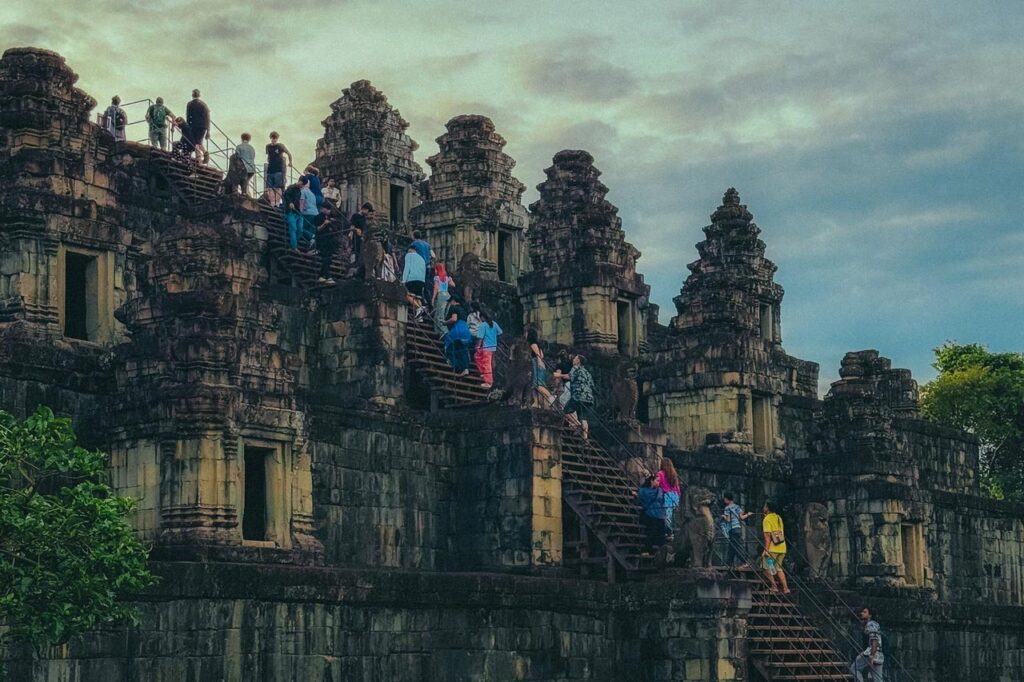
Built in the temple-mountain style with five tiers and 108 small towers
Constructed from sandstone and laterite, now softened by moss and time
Central sanctuary aligned with celestial bodies—an ancient observatory of sorts
Steep staircases and narrow terraces offer panoramic views of Angkor Wat and the surrounding forest canop
Cultural & Mythological Significance
Phnom Bakheng was more than a temple—it was a cosmic axis. Its layout reflects Hindu cosmology, and its towers may have represented lunar phases. While less mythologized than Phimeanakas, its spiritual gravity still draws pilgrims and seekers at dusk.
Visitor Experience & Atmosphere
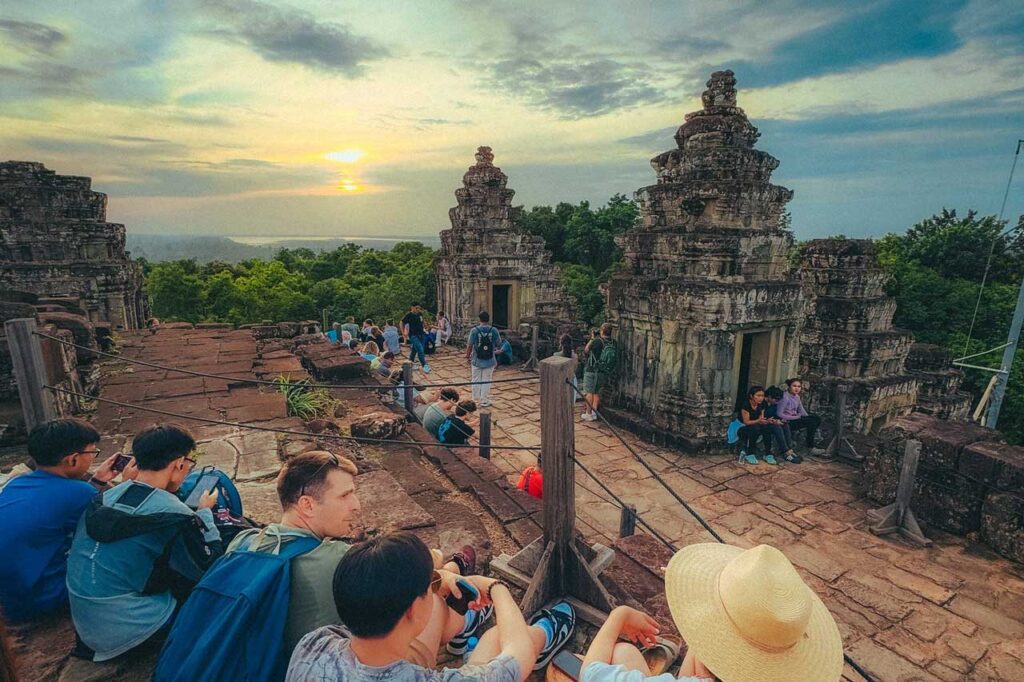
August brings dramatic skies and cooler breezes. On the evening of the 18th, a light drizzle cleared just before sunset. Visitors gathered quietly on the upper terrace, shoes damp from the climb, eyes fixed westward. The sun dipped behind Angkor Wat’s silhouette, casting golden light across the jungle. Monks in saffron robes stood beside travelers, all sharing a moment of reverence.
“It felt like time paused,” said one visitor. “The light, the silence, the view—it was sacred.”
Travel Logistics
Getting there: 15-minute drive from Siem Reap; tuk-tuks and e-bikes are popular
Entry: Requires Angkor Pass (1-day, 3-day, or 7-day options)
Tips:
Arrive by 4:30 PM to secure a spot (visitor numbers are capped)
Wear sturdy shoes—stairs are steep and uneven
Bring water, sunscreen, and a light rain jacket in August

Photographer by Siem Reap Vibes
Nearby Attractions
- Walking distance: Angkor Wat (visible from the summit), Baksei Chamkrong
- Short drive: Bayon, Ta Prohm, Pre Rup, Srah Srang
- Hidden gems: The forest trail behind Phnom Bakheng offers quiet birdwatching and glimpses of lesser-known ruins
Dining & Shopping Suggestions
- After sunset, head back to Siem Reap for:
- Dinner: Chanrey Tree (modern Khmer cuisine), or a casual bite at Khmer Grill
- Shopping: Artisans Angkor for handmade crafts, or browse the Night Market for textiles and souvenirs
Frequently asked questions?
What makes Phnom Bakheng a top sunset spot in Cambodia?
Answer: Perched on a forested hill near Angkor Wat, Phnom Bakheng offers sweeping views of the jungle and temple silhouettes. In August, monsoon clouds and golden light create a serene, almost sacred atmosphere—especially at dusk when monks and travelers gather on the upper terrace.
What is the historical and spiritual significance of Phnom Bakheng?
Answer: Built in the late 9th century by King Yasovarman I, Phnom Bakheng was the first major temple in Angkor and served as the state temple of Yasodharapura. Its design reflects Mount Meru from Hindu cosmology, and its towers may symbolize lunar phases, making it a spiritual and cosmic landmark.
What should visitors know before climbing Phnom Bakheng?
Answer: Arrive by 4:30 PM to secure a sunset spot—visitor numbers are capped. Wear sturdy shoes for the steep, uneven stairs, and bring water, sunscreen, and a light rain jacket, especially in August when light drizzles are common.
What are nearby attractions and post-sunset recommendations?
Answer: From the summit, Angkor Wat and Baksei Chamkrong are visible. A short drive leads to Bayon, Ta Prohm, and Srah Srang. After sunset, head to Siem Reap for dinner at Chanrey Tree or Khmer Grill, and shop for crafts at Artisans Angkor or the Night Market.
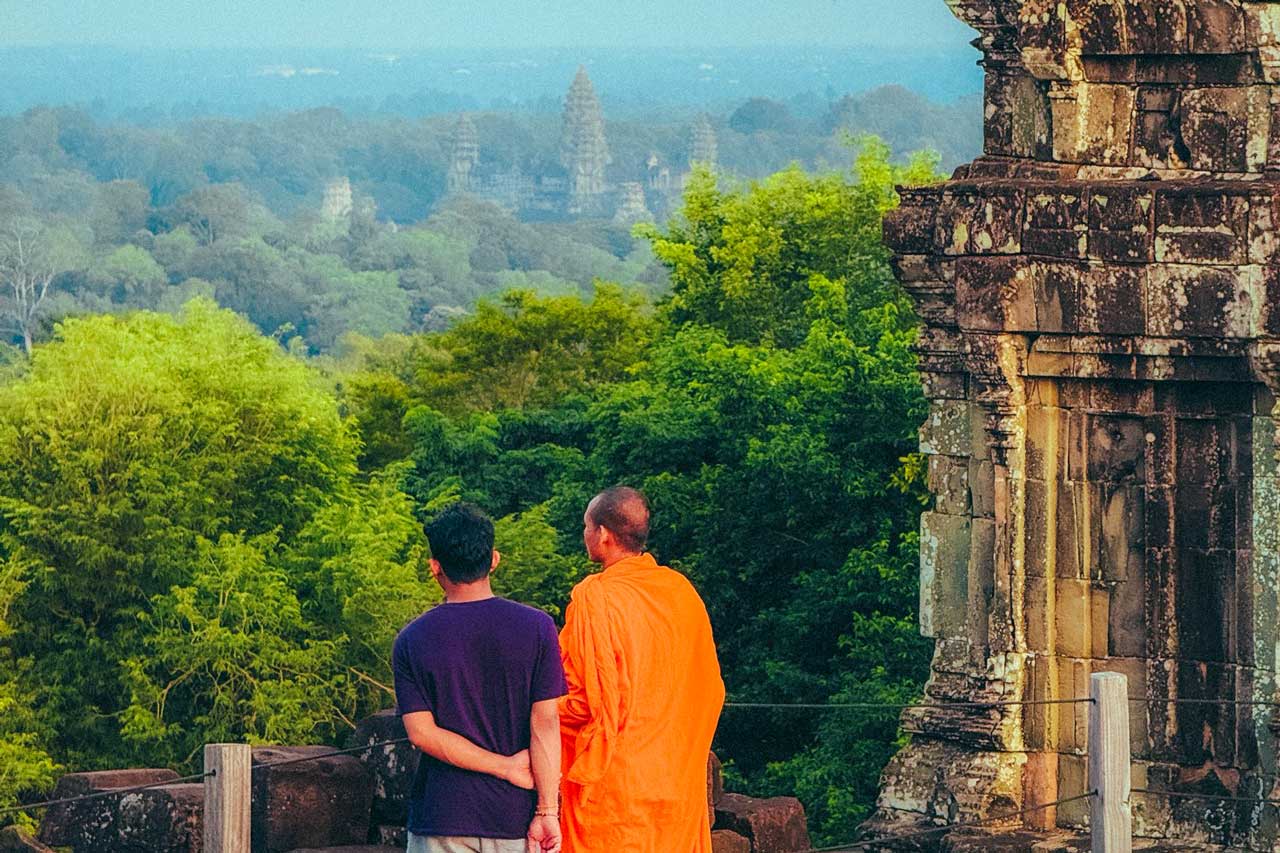
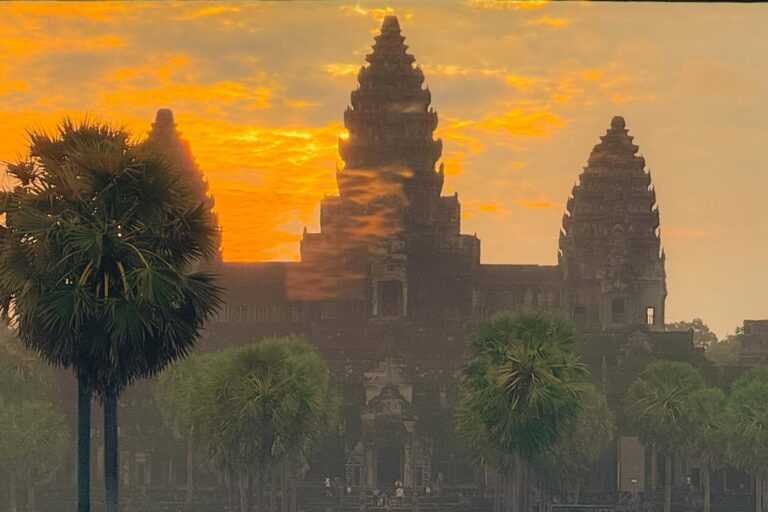
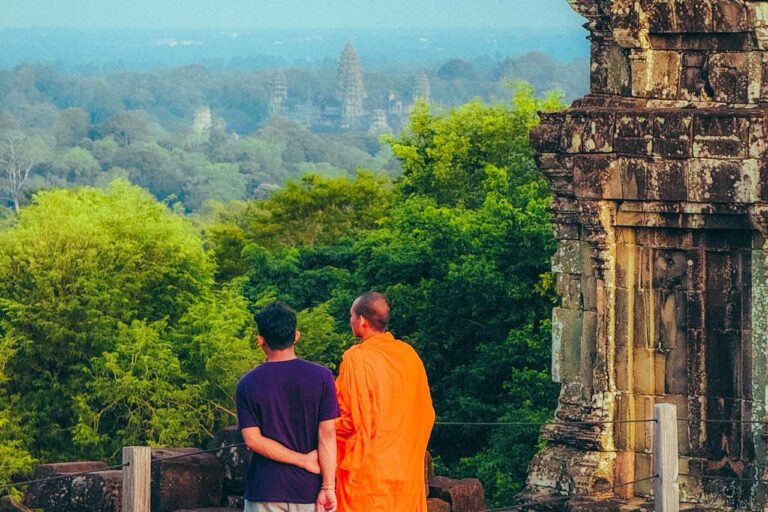

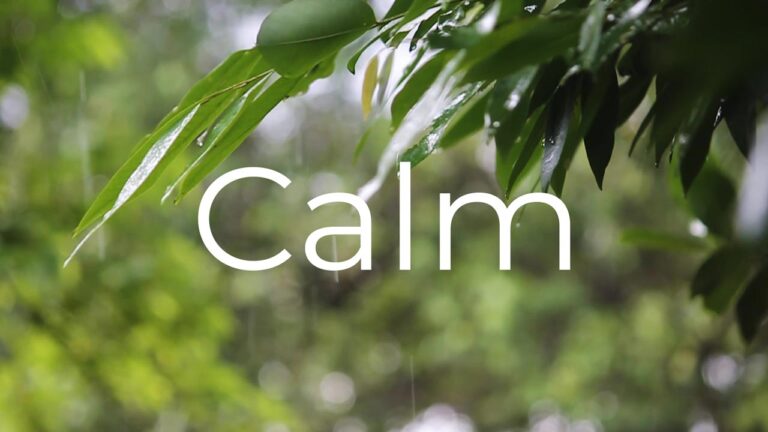

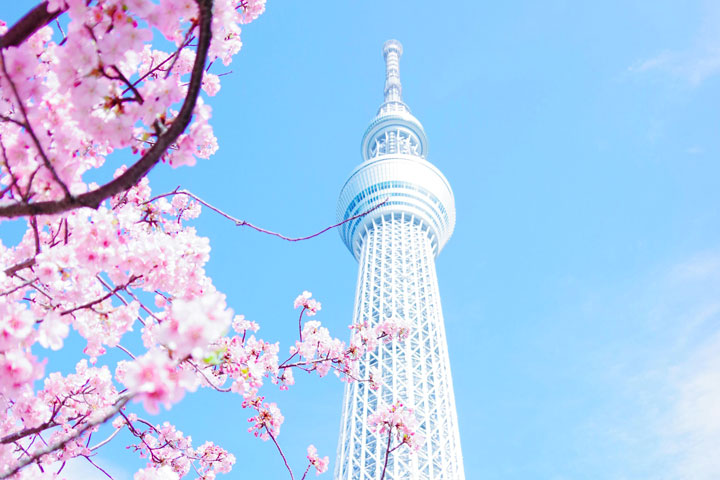
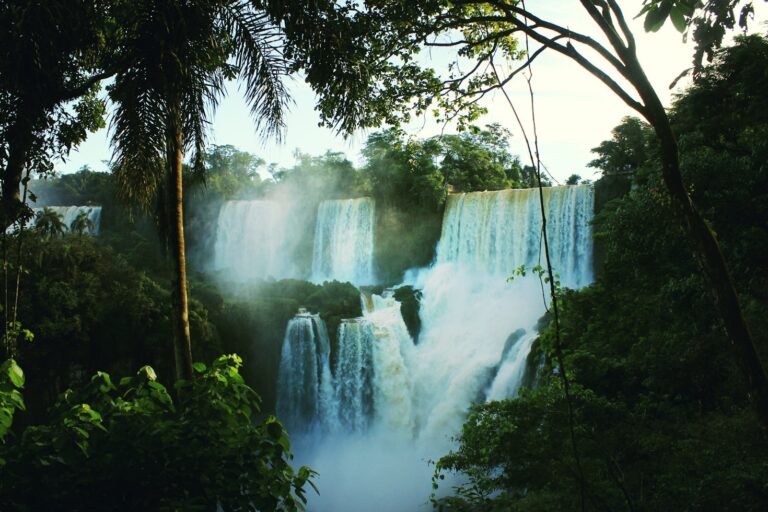
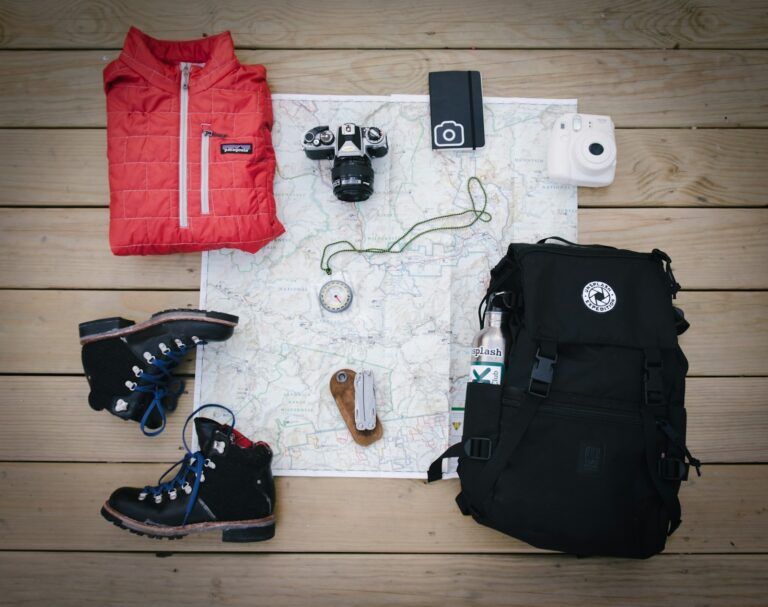

Leave a Reply